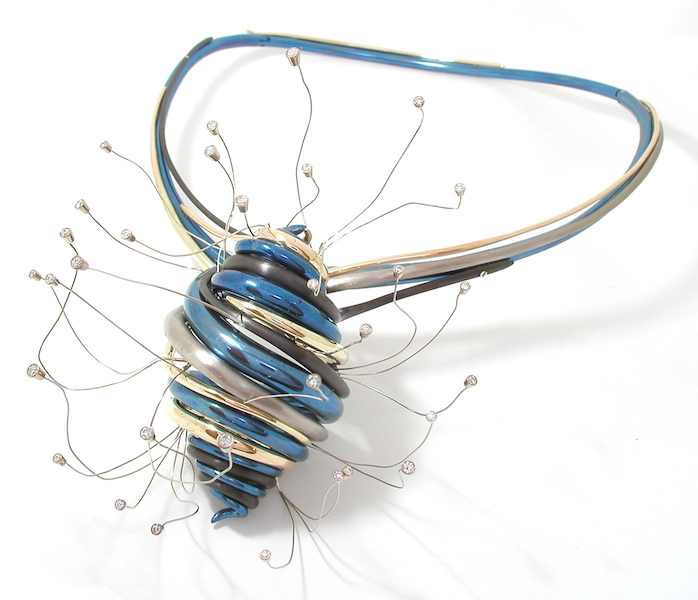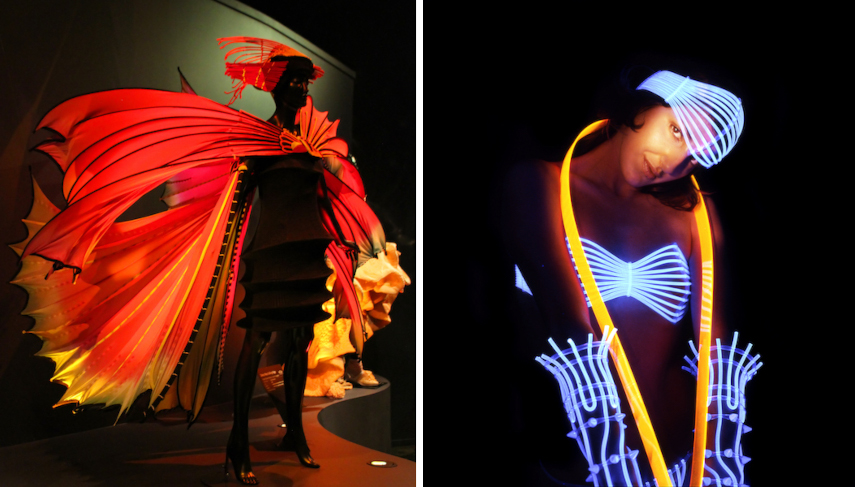Enter the World of Amazing and Original Wearable Art
The emphasis on beauty and extravagance, rather than functionality or comfort, dominates the world of wearable art. Dipping into the world of fantasy, costume design, fashion and extreme innovation in terms of materials used, wearable art refers to individually designed pieces of either handmade clothing or jewelry. The created pieces are to be understood as a unique artistic creation and statement and are often examples of the most outrageous ideas that merge and float between art, fashion and craftsmanship. The celebrations and major festivals organized around the world that commemorate this form of creative production are growing by the minute and in the night of its opening become a lavish party. The “wearable art movement” as we understand it today, was shaped by the years 1930’s to 1960’s, and these are to be understood as the years that build the modern idea of this form of creativity. The wearable art movement first surfaced in the United States during the counterculture years of the late 1960’s and following the spirit of that time, handmade clothing was considered as a tool for self-expression and also a method to rebel against the mass production.

Jewelry As Wearable Art
The shift that occurred in the applied arts, after the end of the Second World War and the birth of Dada, Surrealism, and abstraction, influenced the movement in jewelry design. The modernist designs rejected the decorative styles of Renaissance and Victorian period and even the much-celebrated Art Nouveau pieces were dismissed in order to free the materials. Appealing to the liberal and young intellectuals, jewelers considered their pieces, not as a craft form but as the fine art to wear, and even transformed their shops into small galleries or museums. The exhibition at the Museum of Modern Art in 1946 in New York presented over hundred-thirty-five pieces of jewelry and aimed to fuse together the idea of the author as jeweler and jeweler as the author. The exhibited pieces showcased the influence of the Bauhaus movement and exploration of a fresh technique that manipulated metals, such as silver and gold. The rapid heating and fusing of metals, used by Sam Kramer has a comparison in the paintings of Jackson Pollock, where the loaded brush with color was used in a fluid and partially controlled way similarly to the use of fire by Kramer who described himself that it was by accident he arrived at the method of heating and melting the metal, later building it back again into small abstract sculptures. This miniature form of applied arts held on its decorative purpose and continued to explore and expand the idea of abstract art while at the same time building the bridge to an original way of understanding this miniature form of creativity.
The Mixed Media and Abundance of Materials
Traditionally, most wearable art is produced with fibrous materials and is a continuation of the fiber art field. Following with the technological developments and the desire to create the most unique pieces of fashion or jewelry, today the field of chosen materials extends from the ‘typical’ where we can list leather, metals, and different fabrics. The present day creations are so elaborate that they, in some examples, resemble architectural structures of a kind. Wires, glowing tubes, feathers, miniature details created with the use of computer programs such as Illustrator, Photoshop, and 3D modeling, help the authors to play with the boundary of what is considered art and what is today defined as fashion and design and in the process create for us some of the most memorable pieces of clothing. The different fabrics and materials are tools that push the produced dress or a costume into a variety of different categories.

Conceptual Clothing
The idealistic beginning of the movement that saw garments as a form of self-expression today has grown into a fresh form of a high-end style of clothing. Supporting the idea that it is a form of art, most produced pieces are exhibited and sold through galleries, boutiques, and specialist fairs. The annual World of Wearable Art awards held since 1987 in Nelson in New Zealand, moving in 2005 to Wellington requiring a larger venue for the event is a major happening that showcases the amazing talents of the authors. For some, the investigation into different fabrics is the end result and often materials convey the pieces, while for other the bigger and more extravagant a dress or another piece of clothing is, the better.
Contemporary textile art exists today not only in the form of the above-mentioned movement but there is also a field, coined with the term Conceptual Clothing, which investigates political and social concerns associated with identity through the sculptural representation of the garments. Despite the fact that fashion is for both of the movements considered as only defined through the building of new trends, number of runway designers focus on the creation of wearable artwork that emphasizes beauty and innovation, not functionality. As a form of a spectacle, clothing today, like most elements of our society has no middle ground. It is either highly functional or is a form of art that blurs all of the artistic disciplines into one. For one night, or for the duration of one festival or a party, the models showcase the pieces that later occupy a museum space where, from the first mark of the pencil sketch, the garment was seen to exist.
Editors’ Tip: Modernist Jewelry 1930-1960: The Wearable Art Movement (Schiffer Book for Collectors)
Jewelry production is one of the most important categories of wearable art. Long before the extravagant clothing occurred before our eyes, the need to decorate the outfit and raise this craft to art form helped to shape design and art in America and abroad. This beautifully designed book displays the work of 175 most important American jewelers in over 540 color and 35 black and white photos. Chronologically arranged, the book covers the four pivotal exhibitions, presenting the development and shift in the trends of art and design that helped to shape this movement today.
Featured image: Rosie Ainza - Conflict, 2015. created for the Juneau Wearable Art Show in Centennial Hall. via James Brooks
Can We Help?
Have a question or a technical issue? Want to learn more about our services to art dealers? Let us know and you'll hear from us within the next 24 hours.

